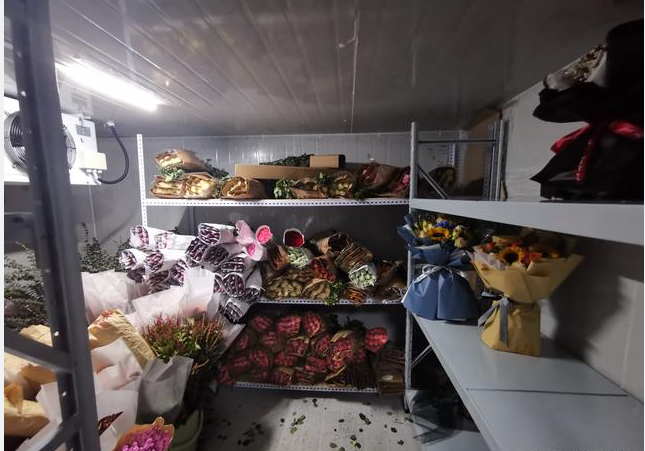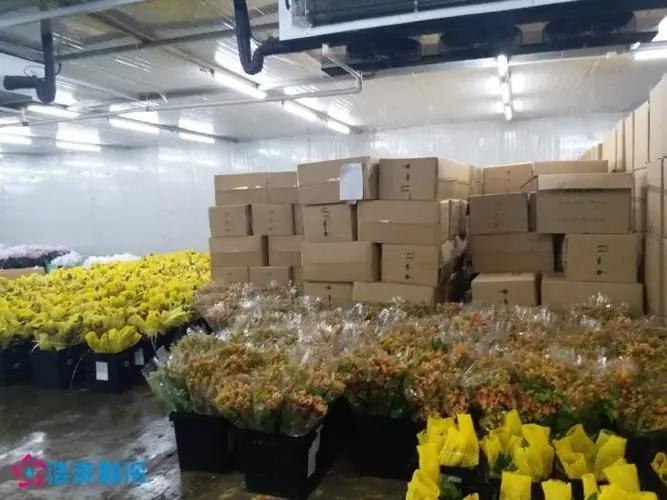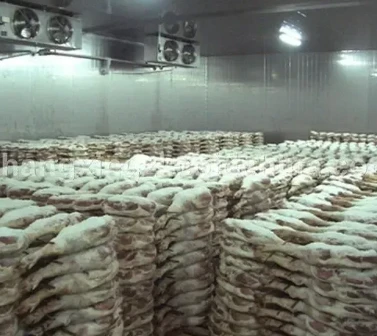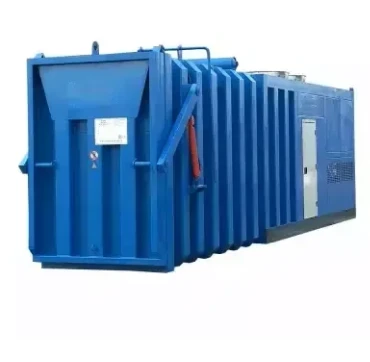Optimal Cold Storage for Onion & All Vegetables Freshness
Elevating Agricultural Preservation: The Science Behind Advanced Cold Storage
In today's globalized food supply chain, the demand for fresh, high-quality produce year-round has never been more critical. This imperative drives continuous innovation in post-harvest preservation technologies, particularly in the realm of cold storage solutions. Among various agricultural commodities, onions present a unique set of challenges due to their physiological characteristics, including high water content and susceptibility to sprouting and fungal diseases if not stored under precise environmental conditions. Effective cold storage for onion is not merely about refrigeration; it encompasses a sophisticated blend of controlled temperature, humidity, and ventilation management designed to extend shelf life, minimize spoilage, and maintain nutritional value. The market trends unequivocally point towards an increased adoption of advanced cold chain infrastructure, driven by burgeoning populations, rising consumer expectations for fresh produce quality, and the strategic importance of reducing post-harvest losses, which globally can account for significant portions of agricultural output. The economic implications are profound, directly impacting grower profitability, supply chain efficiency, and food security. Implementing specialized solutions like those for cold storage for tomato, mini potato cold storage, and comprehensive vegetable cold storage systems represents a crucial investment for modern agricultural enterprises seeking to optimize their operations and meet stringent market demands, ensuring produce arrives at its destination in optimal condition, regardless of seasonality or geographical distance.
The technological evolution in cold storage has transcended basic cooling, now integrating smart systems for predictive maintenance, energy optimization, and real-time monitoring. For instance, the specific requirements for onions involve maintaining temperatures typically between 0°C and 4°C (32°F and 39°F) with relative humidity levels of 65-75% to inhibit root and sprout development while preventing dehydration. This precise environmental control is vital for extending the storage period of onions from a few weeks to several months, significantly enhancing market flexibility and reducing waste. Furthermore, advancements in insulation materials and refrigeration unit efficiencies contribute directly to lower operational costs and a reduced carbon footprint, aligning with global sustainability initiatives. The integration of advanced control algorithms allows for dynamic adjustments based on external conditions and the internal load, ensuring optimal energy utilization. Moreover, the modular design prevalent in modern vegetable cold storage room solutions facilitates scalability, allowing businesses to expand their storage capacity as their operations grow. This flexibility is paramount in an industry characterized by fluctuating harvest yields and market demands, making a robust and adaptable cold chain infrastructure an indispensable asset for any forward-thinking agricultural or food processing entity aiming for long-term success and resilience against market volatility.
Technical Specifications and Design Parameters for Optimal Preservation
The design and engineering of a modern cold storage for onion facility, specifically a Vegetable Cold Storage Room, necessitate a meticulous approach to technical parameters to ensure optimal preservation conditions. Key components include the insulation system, refrigeration units, and sophisticated control systems. Insulation quality, often quantified by its U-value (thermal transmittance), is paramount; lower U-values indicate superior thermal resistance, crucial for energy efficiency. Panels typically feature high-density polyurethane (PU) or polyisocyanurate (PIR) foam cores, encased in pre-painted galvanized iron (PPGI) or stainless steel sheets, offering excellent thermal performance and hygiene. Refrigeration systems are comprised of high-efficiency compressors (e.g., scroll, semi-hermetic reciprocating), evaporators designed for high latent heat removal, and air-cooled or water-cooled condensers. The choice of refrigerant, such as R404A or R507, is carefully considered based on environmental impact and efficiency. Advanced control systems, often leveraging Programmable Logic Controllers (PLCs), provide precise temperature and humidity management, critical for preventing sprouting in onions. These systems often incorporate sensors for real-time monitoring of temperature, relative humidity, and even CO2 levels, allowing for automatic adjustments to maintain the ideal microclimate within the storage environment, thereby maximizing the longevity and quality of the stored produce, minimizing decay, and preserving market value effectively.
Understanding the detailed technical specifications is vital for any investment in a cold storage for onion solution. The Coefficient of Performance (COP) of the refrigeration system, for instance, directly reflects its energy efficiency; higher COPs mean lower operational costs. Air circulation within the storage room is another critical design parameter, requiring careful consideration of fan types and placement to ensure uniform temperature and humidity distribution, preventing hot spots or condensation that could lead to spoilage. Furthermore, the structural integrity of the cold room, including floor loading capacity for heavy produce like onions and appropriate door types (e.g., sliding, swing with heavy-duty hinges), must withstand rigorous daily operations. Access control and safety features, such as emergency alarms and pressure equalization ports, are integrated to ensure personnel safety and structural longevity. The integration of Building Management Systems (BMS) allows for centralized control and data logging, providing invaluable insights into performance metrics and facilitating proactive maintenance. This comprehensive engineering approach, combining robust physical infrastructure with intelligent control systems, is what differentiates a standard cold room from a high-performance Vegetable Cold Storage Room specifically optimized for delicate agricultural products, guaranteeing long-term reliability and superior preservation results.

Typical Technical Parameters for Onion Cold Storage
| Parameter | Specification Range | Impact on Preservation |
|---|---|---|
| Temperature Range | 0°C to 4°C (32°F to 39°F) | Inhibits sprouting, slows respiration and microbial growth. |
| Relative Humidity (RH) | 65% to 75% | Minimizes dehydration and weight loss, prevents fungal development. |
| Insulation Panel Thickness | 100mm to 150mm (PU/PIR) | Reduces heat gain, enhances energy efficiency. |
| Refrigerant Type | R404A, R507, or eco-friendly alternatives | Influences system efficiency and environmental impact. |
| Air Circulation Rate | 20-30 air changes per hour (ACH) | Ensures uniform temperature and humidity distribution. |
| Typical Storage Lifespan (Onions) | 6 to 9 months with optimal conditions | Extends market availability, reduces post-harvest losses. |
Precision Manufacturing and Stringent Quality Control
The construction of a robust cold storage for onion facility, or any advanced Vegetable Cold Storage Room, begins with an exacting manufacturing process for each component, ensuring both structural integrity and thermal efficiency. The core of these structures comprises insulated panels, typically manufactured through a high-pressure foaming process where liquid polyurethane (PU) or polyisocyanurate (PIR) is injected between two metal sheets, usually pre-painted galvanized iron (PPGI), stainless steel, or aluminum. This process ensures uniform density and strong adhesion, critical for preventing thermal bridging and maintaining a low U-value. Precision cutting, often utilizing CNC (Computer Numerical Control) machinery, guarantees exact dimensions for panel interlocking, minimizing gaps and maximizing insulation effectiveness. Doors, crucial for managing thermal transfer during access, are fabricated with robust hinges, secure latches, and integrated heating elements for frost prevention. The manufacturing of refrigeration units involves sophisticated assembly of compressors, condensers, evaporators, and control panels. Each component is sourced from reputable suppliers and undergoes stringent quality checks to meet global standards. For instance, critical parts may undergo casting or forging processes to ensure durability, especially for heavy-duty applications, while precision machining maintains tight tolerances for seamless integration and optimal performance.
Quality assurance protocols are embedded at every stage of the manufacturing process for a superior cold storage for onion solution. Raw materials are subjected to rigorous incoming inspections to verify compliance with specifications such as material composition, thickness, and surface finish, often adhering to ASTM or EN standards. During production, in-line quality checks monitor the foaming process, panel dimensions, and surface integrity. Post-production, finished panels and components undergo comprehensive testing, including density checks, adhesion strength tests, and visual inspections for defects. Refrigeration units are subjected to pressure testing, leak detection, and performance benchmarking, ensuring their Coefficient of Performance (COP) meets design specifications. Adherence to international standards such as ISO 9001 for quality management systems and CE certification for European market entry underscores a commitment to reliability and safety. The typical lifespan of well-maintained cold storage components, particularly panels and structural elements, can exceed 20-25 years, demonstrating the long-term investment value. These highly durable systems find extensive application across various industries, including agriculture, food processing, logistics, and wholesale distribution. Their inherent advantages, such as superior energy efficiency stemming from advanced insulation and high-efficiency refrigeration, coupled with corrosion-resistant materials and hygienic interior finishes, make them indispensable for preserving perishable goods and supporting a sustainable cold chain.
Diverse Application Scenarios and Distinct Technical Advantages
The versatility of advanced cold storage solutions extends far beyond general refrigeration, offering specific benefits across a myriad of agricultural and food industry applications. For cold storage for onion, these facilities are crucial for mitigating the challenges associated with seasonal harvests. Growers can store large volumes of onions immediately after harvesting, preventing rapid spoilage and allowing them to supply markets during off-peak seasons, thus stabilizing prices and maximizing revenue. Beyond simple preservation, these cold rooms are vital for seed stock preservation, ensuring viability and genetic integrity for future planting cycles. In the context of large-scale agricultural cooperatives and distribution hubs, a comprehensive vegetable cold storage room acts as a central node for consolidating, sorting, and dispatching produce, significantly streamlining logistics and extending the market reach for perishable goods. Similarly, dedicated cold storage for tomato facilities ensure tomatoes retain their firmness, color, and flavor for extended periods, crucial for both fresh consumption and processing. For specialized crops, a mini potato cold storage unit addresses the unique needs of seed potatoes or specific potato varieties, preventing sprouting and disease while maintaining texture and quality for the long term. These diverse applications underscore the critical role of tailored cold chain solutions in modern agriculture.
The technical advantages offered by modern cold storage systems provide a significant competitive edge over traditional storage methods. Firstly, unparalleled precision in temperature and humidity control is achievable, often within narrow tolerances of ±0.5°C and ±3% RH. This precise control is critical for preserving sensitive produce like onions, which are prone to quality degradation with even slight environmental fluctuations. Secondly, integrated advanced ventilation systems are designed to manage respiration gases (e.g., ethylene, CO2) and prevent the accumulation of moisture, which can lead to mold and bacterial growth. This feature is particularly beneficial for long-term storage of items requiring specific atmospheric conditions. Thirdly, the inherent energy efficiency of these systems, driven by high-efficiency compressors (e.g., with COPs exceeding 3.0 at optimal conditions) and superior insulation (U-values as low as 0.20 W/m²K), translates into substantial operational cost savings over the facility's lifespan, offering a compelling return on investment. Furthermore, the modular design allows for future expansion or re-configuration, providing unparalleled flexibility to adapt to changing business needs. Remote monitoring capabilities, accessible via web or mobile applications, enable facility managers to oversee conditions, receive alerts, and make adjustments from anywhere, ensuring continuous optimal performance and minimizing the risk of costly spoilage incidents. These combined technical advantages ensure that the stored produce maintains its peak quality, extending shelf life and enhancing marketability.

Tailored Solutions and Strategic Manufacturer Comparison
Recognizing that no two agricultural operations are identical, the provision of customized cold storage solutions is a hallmark of a professional and client-centric manufacturer. For a cold storage for onion project, customization extends beyond mere sizing to encompass specific requirements such as multi-chamber configurations for different varieties or produce types (e.g., one chamber for onions, another for cold storage for tomato), specialized shelving and racking systems for optimal air circulation and load distribution, and integration with existing material handling equipment. Advanced manufacturers leverage sophisticated CAD/CAM software to design bespoke layouts that maximize space utilization and operational efficiency, considering factors like ambient conditions, energy costs, and specific produce physiology. This bespoke approach ensures that the client receives a solution perfectly aligned with their operational workflow, capacity needs, and long-term business objectives. Whether it's a compact mini potato cold storage for a small farm or a sprawling vegetable cold storage facility for a major distributor, the ability to engineer a solution that accounts for every nuance is a testament to the provider's technical acumen and commitment to client success, ensuring an optimal return on the significant capital investment.
When evaluating manufacturers for a cold storage for onion or any large-scale Vegetable Cold Storage Room project, several critical factors differentiate industry leaders from general suppliers. Firstly, technical innovation is paramount; look for manufacturers who invest in R&D to offer the latest in energy-efficient components, smart control systems, and environmentally friendly refrigerants. Secondly, the service record and reputation for reliability are crucial, including post-installation support, spare parts availability, and responsiveness to technical issues. A robust warranty and clear service level agreements (SLAs) offer peace of mind. Thirdly, industry certifications such as ISO 9001, CE, and adherence to specific national and international standards (e.g., ASTM for materials, ASHRAE for refrigeration) validate a manufacturer's commitment to quality and safety. Finally, an experienced manufacturer will offer comprehensive project management, from initial consultation and design to installation, commissioning, and staff training, ensuring a seamless implementation. Our commitment to these principles, backed by years of experience and a track record of successful deployments across diverse climates and operational scales, positions us as a trusted partner in providing high-performance, durable, and cost-effective cold chain solutions that stand the test of time and market demands.
Empirical Evidence: Successful Application Cases
The real-world efficacy of advanced cold storage solutions is best demonstrated through successful application cases, illustrating their tangible impact on profitability and operational efficiency. Consider a large agricultural cooperative in a region with significant onion production. Before implementing a state-of-the-art cold storage for onion facility, they faced substantial post-harvest losses, sometimes exceeding 25% due to inadequate storage, leading to rapid spoilage and a restricted marketing window. After commissioning a custom-designed Vegetable Cold Storage Room with a capacity of 5,000 metric tons, equipped with precise temperature and humidity controls and forced-air ventilation, their post-harvest losses plummeted to less than 5%. This dramatic reduction allowed them to extend their market supply period by over four months, selling onions at higher, off-season prices, resulting in an estimated 15% increase in annual revenue. This case exemplifies how strategic investment in purpose-built cold storage directly translates into enhanced profitability and sustainability for large-scale agricultural operations. The system's robustness was further proven by its ability to maintain stable conditions even during peak summer months with ambient temperatures exceeding 40°C, highlighting its resilience and energy efficiency.
Another compelling case involved a food distribution company expanding its portfolio to include delicate fresh produce like tomatoes and specialty potatoes, requiring dedicated cold storage for tomato and mini potato cold storage facilities. Their initial challenge was maintaining quality consistency across long supply chains and varied climates, with customer complaints related to product freshness. By integrating a network of modular vegetable cold storage units at key distribution points, each optimized for specific produce types, they achieved unprecedented control over their cold chain. For instance, their tomato storage unit maintained a consistent 12°C with 90% RH, significantly reducing chilling injury and extending shelf life by an average of 10 days, allowing them to serve more distant markets. Similarly, the mini potato cold storage, operating at 4°C with reduced light exposure, ensured minimal sprouting and maintained texture for premium potato varieties. These distributed cold storage assets not only improved product quality and reduced waste but also enhanced customer satisfaction and enabled the company to expand its geographical market reach by 20%, proving the strategic advantage of tailored, high-performance cold chain infrastructure in diverse commercial settings.

Ensuring Reliability: FAQs, Delivery, and Support
Investing in a cold storage for onion or any substantial Vegetable Cold Storage Room requires confidence in the product's reliability and the manufacturer's support system. Common inquiries from potential clients often revolve around operational costs, return on investment (ROI), maintenance requirements, and scalability. For instance, many ask about typical energy consumption; advanced cold rooms significantly reduce this through high-efficiency components and intelligent controls, with payback periods often as short as 2-3 years through reduced spoilage and extended market access. Maintenance is streamlined with modular designs and easily accessible components, often requiring routine checks similar to standard HVAC systems, minimizing downtime. Our systems are designed for modular expansion, allowing businesses to incrementally increase capacity as their needs evolve without significant structural overhauls, offering unparalleled flexibility. Questions also arise regarding environmental impact; our solutions prioritize refrigerants with low Global Warming Potential (GWP) and energy-saving features to align with sustainability goals, reducing the carbon footprint of the cold chain, thereby providing both economic and ecological benefits to our clients and the wider community.
Transparency in delivery cycles and comprehensive post-sales support are paramount to building client trust. Typically, the delivery cycle for a custom cold storage for onion project, from initial design approval to commissioning, ranges from 8 to 16 weeks, depending on the complexity, capacity, and logistical requirements. This timeline includes precise manufacturing, quality control checks, transportation, and on-site installation by certified technicians. We provide detailed project timelines with key milestones, ensuring clients are informed at every stage. Our commitment to quality is underpinned by a standard 1-year warranty on the entire system, with extended warranties available for specific components like compressors. This warranty covers manufacturing defects and ensures operational integrity post-installation. Furthermore, our dedicated customer support team provides comprehensive technical assistance, remote diagnostics, and prompt dispatch of spare parts. We also offer training programs for client personnel on optimal operation and routine maintenance, empowering them to maximize the performance and longevity of their Vegetable Cold Storage Room. This holistic approach to service, from initial consultation through the entire lifespan of the cold storage system, underscores our commitment to long-term client partnerships and uninterrupted, efficient preservation.
Conclusion: Pioneering Advanced Cold Chain Solutions
The imperative for highly efficient and reliable cold storage solutions, particularly specialized cold storage for onion and other perishable commodities, has never been more pronounced in the modern agricultural and food logistics landscape. Our advanced Vegetable Cold Storage Room offerings represent the pinnacle of engineering and design, incorporating cutting-edge materials, energy-efficient refrigeration technologies, and intelligent control systems. By delivering precise environmental conditions, these solutions not only drastically reduce post-harvest losses and extend the shelf life of produce but also contribute significantly to reducing operational costs and enhancing overall supply chain resilience. The integration of modular designs, comprehensive technical parameters, and rigorous quality assurance processes ensures that each solution is both highly adaptable and exceptionally durable, providing a robust infrastructure that meets the dynamic demands of global markets. This strategic investment empowers growers, distributors, and food processors to optimize their operations, enhance product quality, and secure a competitive advantage in a rapidly evolving industry where freshness and reliability are paramount. Our commitment to innovation, coupled with our deep understanding of the unique preservation needs of various produce, positions us as a leader in delivering sustainable and high-performance cold chain solutions that drive tangible economic and environmental benefits for our clients worldwide.
References
- Thompson, A. K. (2003). Controlled Atmosphere Storage of Fruits and Vegetables. CABI Publishing.
- Kader, A. A. (2002). Postharvest Technology of Horticultural Crops. University of California, Division of Agriculture and Natural Resources. Publication 3311.
- ASHRAE Handbook—Refrigeration (2018). American Society of Heating, Refrigerating and Air-Conditioning Engineers.
- Sastry, S. K., Siddiq, M., & Rahman, M. S. (2007). Fresh-Cut Fruits and Vegetables: Science, Technology, and Market. CRC Press.






